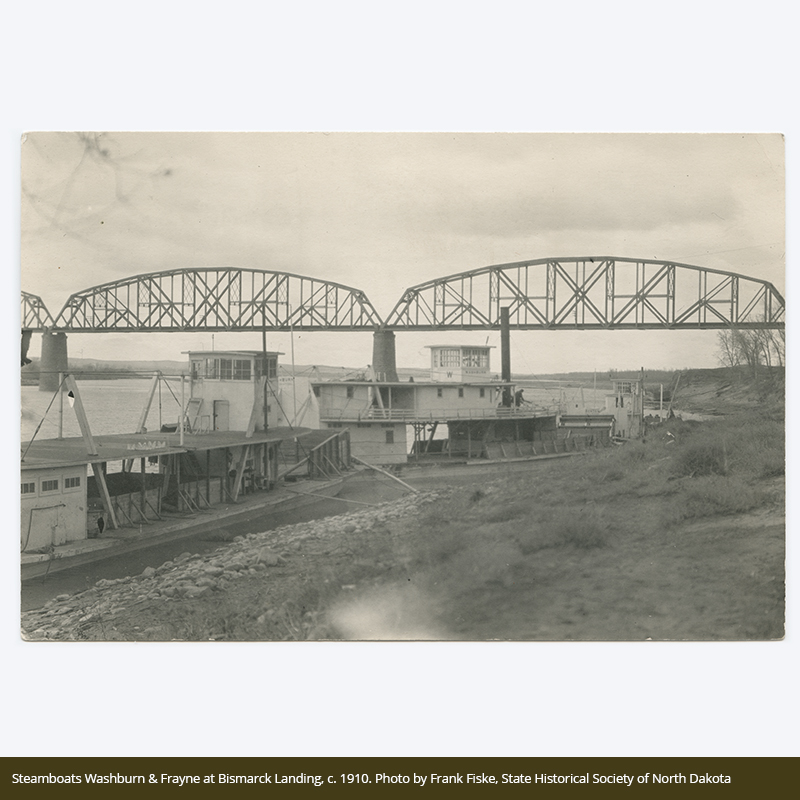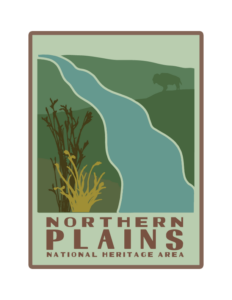Transportation
No reliable source accurately dates the arrival of the horse to the Northern Plains, but the arrival of horses meant hunters turned from small game to bison, elk, deer, and antelope. The horse was both sacred and utilitarian.
During the steamboat age (1831-1945) more than 150 vessels plied the Upper Missouri with passengers, furs, provisions for the military forts, and other commodities by the ton until 1867 when other industrial advances—railroads, bridges, highways, dams—gradually supplanted them.
Today, the Fort Abraham Lincoln Foundation’s heritage tourism steamboat Lewis & Clark takes passengers onto the river, and perhaps back in time, from its dock in Bismarck.
In 1864, the U.S. government established Fort Rice, a military base along the river. Subsequent forts along the Missouri were supplied by steamboats prior to the Northern Pacific Railroad’s arrival at the Missouri River in 1872.
This signaled yet more change on the Northern Plains as it brought waves of immigrants—Germans, German-Russians, Swedes, Norwegians, Ukrainians, Bohemians, Canadians and Irish—who claimed homesteads, settled, arranged the landscape, and built the organizations and institutions we see on the Northern Plains of the Upper Missouri region today.


